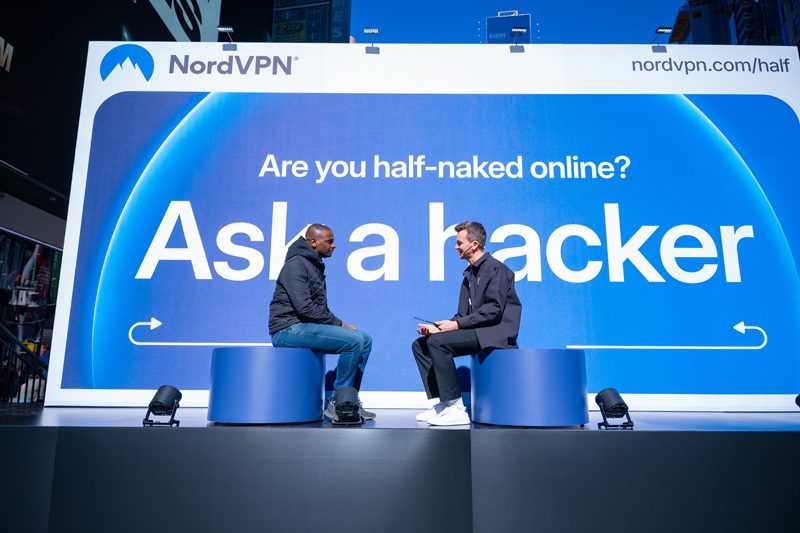Marketers spent $748 million on in-store services in 1997, including $172 million on loyalty card programs, funded mostly by retailers. Promotion is the fastest-growing segment of in-store marketing, while ads – aisle banners and cart placards – continue to decline.
One number hasn’t changed: 70 percent of purchase decisions are still made at the shelf. Targeting has become the Holy Grail of in-store marketing as package goods companies distinguish between loyal users, light users, and switchers while they stroll the aisles. The key is household purchase data, and marketers are ever more willing to pay a premium for in-store services that use such data to pinpoint key shoppers. That will continue to fuel two important trends in in-store marketing.
Loyalty and database marketing drove the 15 percent growth in total in-store promotion spending last year, and continue to change the landscape of marketing options as more services leverage loyalty programs. Targeting will continue to fuel two important trends in in-store marketing. First, more marketers will emphasize targeting over total reach, tailoring promotions to key audiences based on purchase history. Second, retailer databases become standard equipment as package goods companies look to piggyback their own promotions on retailers’ loyalty cards.
That’s got retailers opening their wallets wider, too, now that 8,600 supermarkets have loyalty programs. The initial cost for equipment and cards is high – about $4 per household – but more grocers are finding that loyalty cards and the data they capture are worth the investment. Startups keep the segment growing by about 30 percent a year, says Barry Kotek, principal of Retail Systems Consulting, Naples, FL.
“A lot of new in-store promotion companies are dependent on retailers having a loyalty program,” Kotek says. One start-up, Relationship Marketing Group, Wilton, CT, is expected to roll into 1,000 stores this year with its customized shopping list: Offers are tailored and timed by a cardholder’s past purchases, tracked by – you guessed it – a loyalty card.
Online goes in-store One of the pioneers of in-store services, Catalina Marketing Corp., hit $217 million in revenues for fiscal ’98, up 26 percent. Fully $214 million came from in-store activities like flagship Checkout Coupon (now in 11,164 stores) and Checkout Direct. Catalina has high hopes for new ventures Health Resource Publishing Co., executing scanner-based promos in 1,920 drugstore and supermarket pharmacies, and Supermarkets Online, issuing coupons for redemption in-store via its ValuPage Web site. Thirty manufacturers have committed to online programs in 115 categories for ’98.
Introduced in late ’96, Supermarkets Online is still in its infancy, but it will be “a significant contributor to Catalina revenues in 1998,” says exec vp-marketing and new applications David Diamond. The biggest growth this year was among Catalina’s scanner-based sweeps program, Checkout Prizes, and sampling.
“We’re considered an in-store couponing company, but we’re not just couponing, and we’re not just in-store – we’re a targeting company,” says Diamond.
Catalina’s couponing counterpart, Actmedia, has done some morphing of its own. Its pioneering Instant Coupon Machine business was folded into News Corp.’s News America Marketing division (along with News America FSIs) after News Corp. bought Actmedia in August 1997. In April 1998, News America Marketing bowed SmartSource FSIs and in-store couponing, the first “brand” to cover both couponing venues as well as shelf-talkers, take-one on-shelf displays, and cart ads.
Building the SmartSource brand will be a major push for News America this year under the tagline “Home to America’s Great Brands.” A Web site (www.smartsource.net) previews local offers for consumers who type in their ZIP codes, and then scan the local Sunday paper’s FSIs four days before they’re delivered.
News America Marketing also took Actmedia’s red box online this year via Peapod shopping service, pitching virtual-shelf deals as shoppers place their Peapod orders for home delivery.
As in-store activities segue into print, direct mail, and online, the distinction becomes more about targeted versus mass reach strategies rather than in-store versus print tactics. News America will continue to drive mass-market couponing, while Catalina focuses on targeted markets, both inside and outside the store.
Store Wars In February, Catalina touched off a coupon war with Inter-Act Systems, suing the four-year-old company for patent infringement. Norwalk, CT-based Inter-Act’s Loyalty Network kiosks in 1,550 stores use shopper loyalty cards to trigger customized shopping lists of discounts; kiosks track household purchases to tailor promo offers. In January, Catalina got a patent for “the printing of coupons selected by a consumer via an in-store electronic display terminal,” and in March, collected another patent for issuing incentives based on consumer purchase patterns. Inter-Act countersued Catalina for infringement of its own patent.
The litigation could drag on for years, but won’t stop Catalina or Inter-Act from conducting business. Inter-Act chairman Stephen Leeolou blasted Catalina in February, saying Catalina’s purchase of a kiosk-based patent “might suggest Catalina has changed its tune regarding the value of interactive kiosks. But we believe the reality is more likely that Catalina recognized Inter-Act’s . . . network is a formidable competitor, and is seeking . . . to slow us down.”
For its part, Inter-Act signed U.K. chain Sainsbury’s this year, even as it expands its U.S. reach to a projected 4,000 stores by year-end. Catalina’s court actions came just as Inter-Act was soliciting funds for expansion, however, so it’s unclear whether that installation number will be hit.
Merchandising’s influence In-store merchandising services continue to grow as manufacturers emphasize account-specific and other store-level marketing. Third-party merchandising has grown to an estimated $1 billion business, according to the National Association of Retail Merchandising Services. While package goods manufacturers still consider merchandising an operations rather than marketing expense, the overlap increases as meal solutions and other promo strategies emphasize merchandising.
Computer superstores and department stores have begun using more third-party merchandising services, and the events business is growing for service companies as manufacturers look to get their brands into consumers’ hands rather than just waving it before their eyes in ads. “Brand marketers doing store-level marketing need someone to get down to that level to execute,” says Gary Ebbens, exec director of of NARMS in Stevens Point, WI.
Growth is coming from both sides as retailers – especially supermarkets – execute shelf changes prompted by ECR efforts for efficient product assortment and promotion, and as manufacturers cut their own sales forces and outsource field servicing.
Cost continues to be a point of contention as manufacturers pick up retailers’ slack by funding third-party merchandisers. But “that issue will be resolved,” Ebbens predicts. “If [merchandisers] do the work well, manufacturers will see it as a value-added service, a reasonable marketing investment rather than just a cost of doing business.”
But retailers are assuming tighter control over the in-store environment in areas such as demos, and that could have a spillover effect to other forms of in-store marketing. Most chains require manufacturers to work with retailer-approved suppliers, which differ by chain and by market. The result is “this labyrinth of companies, a crazy patchwork of local manpower suppliers you have to use to execute promos,” says Tim Hawkes, managing director of Trade Zone, Westport, CT. “How do you control that group of people? How can you create symmetry for a brand? It’s a big issue.”
* In-store goes out-of-store as Catalina, News America Marketing (News America FSI plus Actmedia) add direct mail, FSIs, and online elements to their offerings.
* Target, not total reach: Marketers tailor promotions to key audiences based on purchase history.
* Database becomes standard equipment as promos piggyback on loyalty cards.



